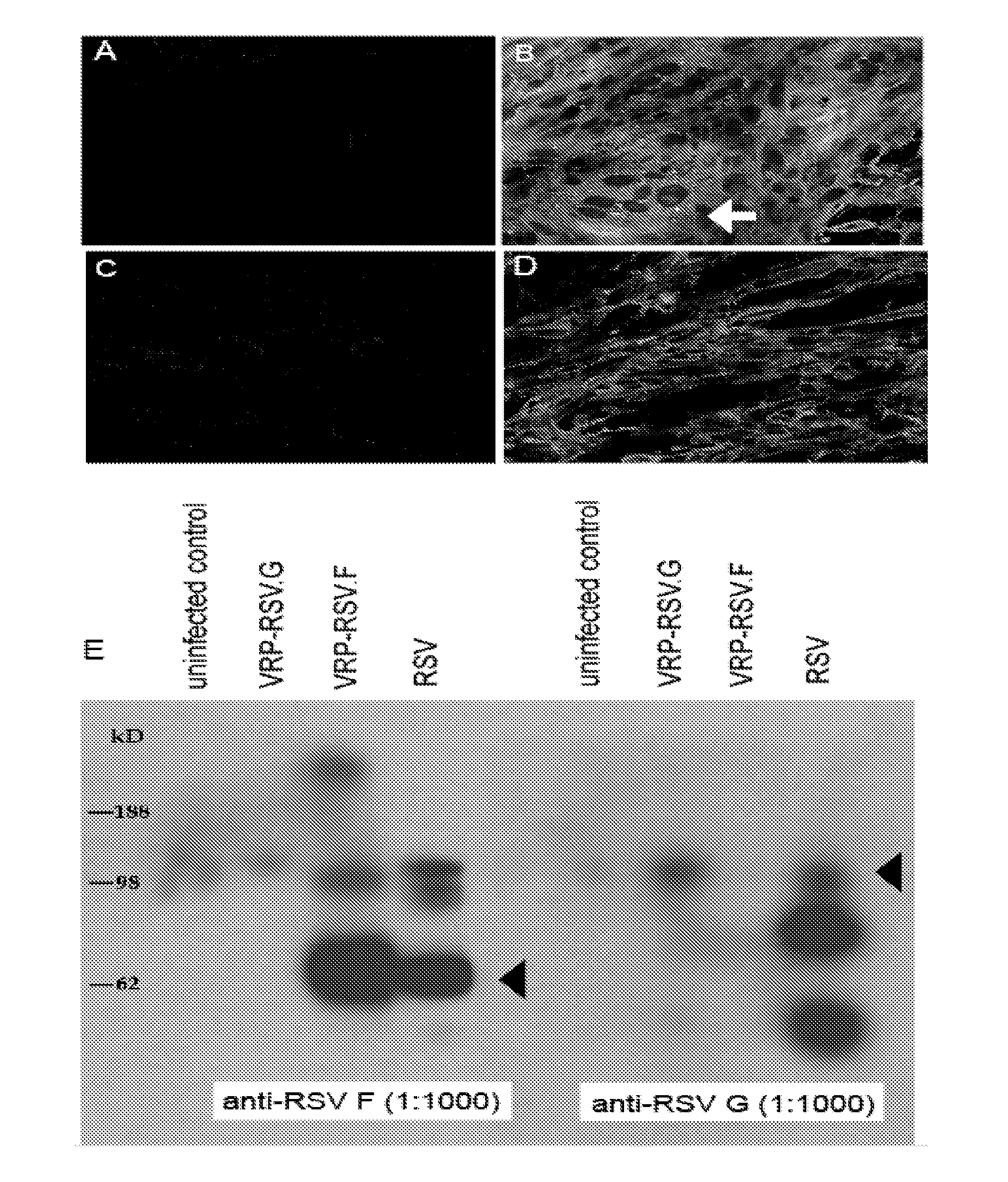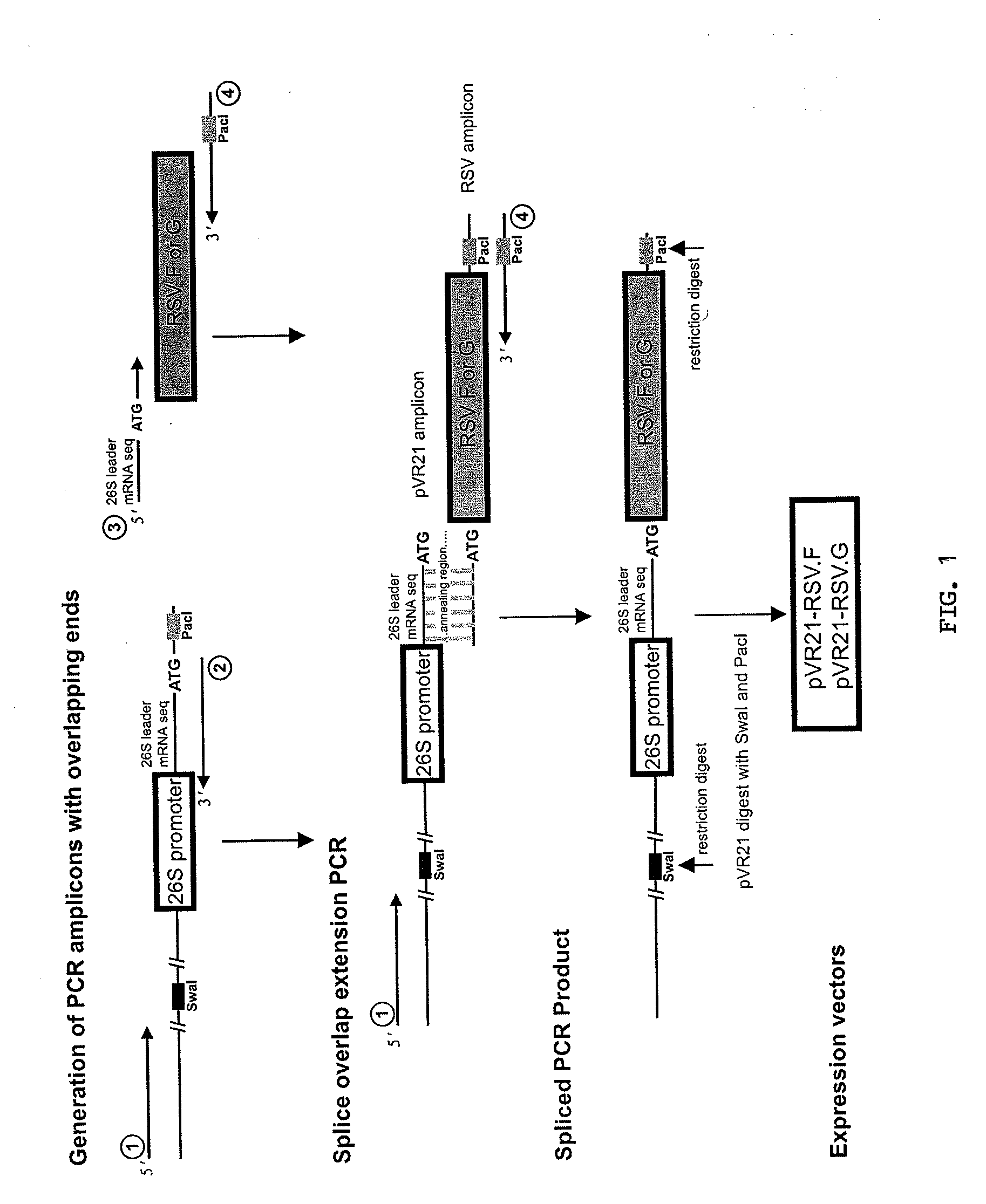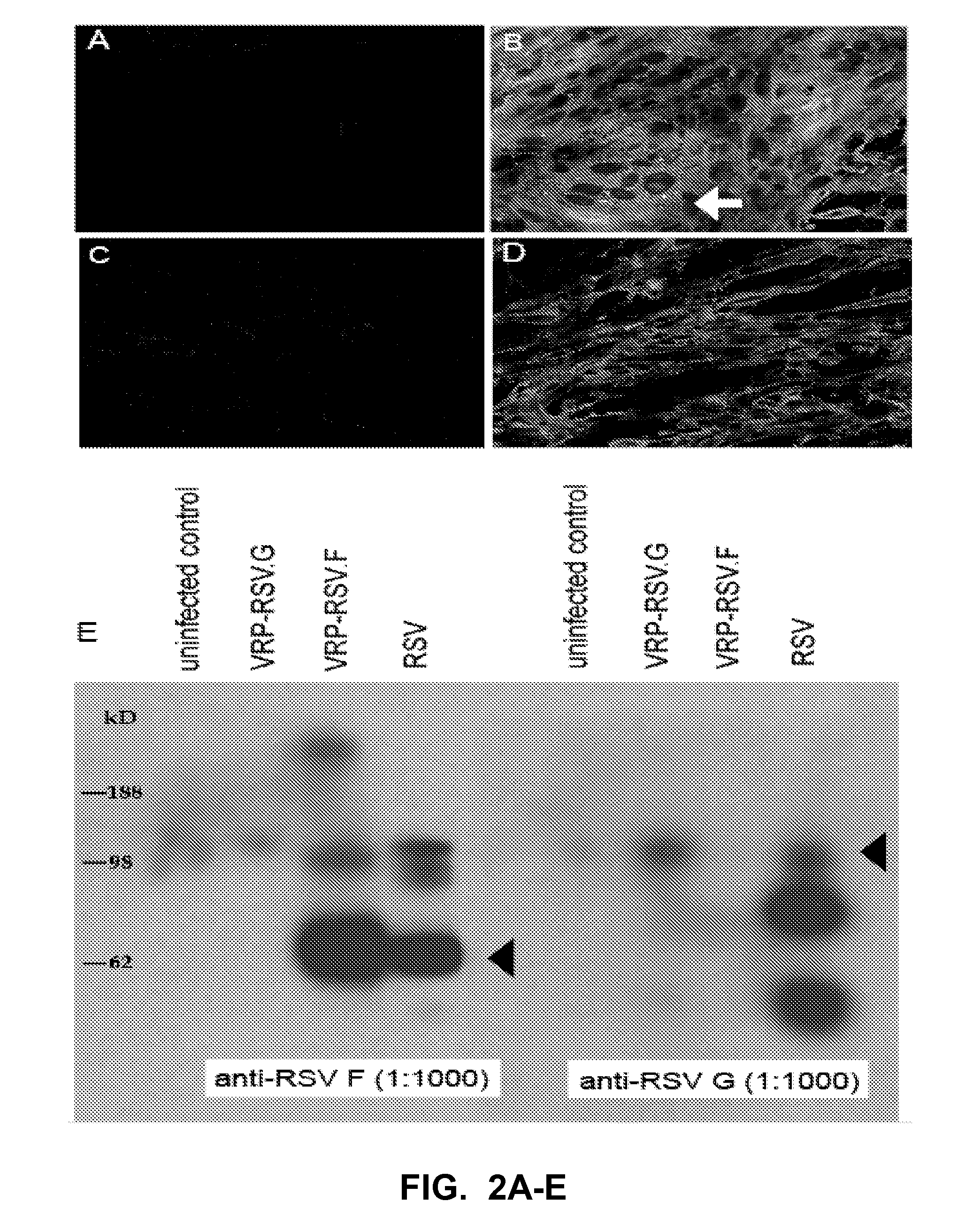Vaccine for rsv and mpv
a technology for rsv and vaccines, applied in the field of molecular biology, genetics and virology, can solve the problems of not being able to obtain fda-approved vaccines, not being able to save infants from infection, and previous attempts to develop rsv vaccines have faced significant obstacles
- Summary
- Abstract
- Description
- Claims
- Application Information
AI Technical Summary
Benefits of technology
Problems solved by technology
Method used
Image
Examples
example 1
Materials & Methods
[0079]Animals and Cell Lines. Specific pathogen-free 5-6 week old BALB / c mice and cotton rats were purchased from Harlan (Indianapolis, Ind.). Animals were housed in micro-isolator cages throughout the study. All experimental procedures performed were approved by the Institutional Use and Care of Animals Committee at Vanderbilt University Medical Center.
[0080]HEp-2 cells were obtained from ATCC (CCL-23) and maintained in OptiMEM medium (Invitrogen, CA) supplemented with 2% fetal bovine serum (FBS), 4 mM L-glutamine, 5 μg / mL amphotericin B and 50 μg / mL gentamicin sulfate at 37° C. with 5% CO2.
[0081]VEE Constructs and Generation of VRPs encoding RSV F or G genes. The method of construction and packaging of VRPs was described (Davis et al., 1996). A VEE-based replicon, pVR21, which was derived from mutagenesis of a cDNA clone of the Trinidad donkey stain of VEE was used to insert heterologous genes. RSV F, G or human metapneumovirus (hMPV) F genes optimized for mamma...
example 2
Results
[0098]Cloning and expression of RSV antigens using VEE replicon particles (VRPs). RSV fusion (RSV.F) and attachment (RSV.G) glycoprotein genes were cloned into the pVR21 VEE replicon vector under the control of a subgenomic 26S promoter (FIG. 1). VRPs then were produced in BHK cells by cotransfecting the replicon vector with plasmids encoding VEE capsid and structural proteins.
[0099]To ensure these replicons expressed the desired antigens, BHK cells were infected at a moi of 5 with VRPs. Antigen expression then was measured by Western blot and immunostaining with RSV.F or RSV.G specific monoclonal antibodies. A robust amount of RSV F protein was expressed, as evident by the intense staining of BHK cells with anti-RSV F antibodies (FIG. 2B), compared to uninfected control cells (FIG. 2A). Examination by confocal microscopy revealed the formation of syncytia when RSV F proteins were expressed (arrow, FIG. 2B). RSV F expression also was confirmed by Western blot of infected cell...
example 3
Materials & Methods
[0110]Animals and cell lines. 5-6 week old DBA / 2 mice and cotton rats were purchased from Harlan (Indianapolis, Ind.) and Virion Systems (Rockville, Md.) respectively. Animals were housed in micro-isolator cages throughout the study. All experimental procedures performed were approved by the Institutional Animal Care and Use Committee at Vanderbilt University Medical Center.
[0111]LLC-MK2 cells were obtained from ATCC(CCL-7) and maintained in OptiMEM I medium (Invitrogen) supplemented with 2% fetal bovine serum (FBS), 4 mM L-glutamine, 5 μg / mL amphotericin B and 50 μg / mL gentamicin sulfate at 37° C. with 5% CO2. BHK-21 cells were obtained from ATCC(CCL-10) and maintained in Eagle's Minimum Essential Medium) supplemented with 10% fetal bovine serum (FBS), 4 mM L-glutamine, 5 μg / mL amphotericin B and 50 μg / mL gentamicin sulfate at 37° C. with VEE constructs and generation of VRPs encoding hMPV F or G genes. The method of construction and packaging of viral replicon p...
PUM
| Property | Measurement | Unit |
|---|---|---|
| diameter | aaaaa | aaaaa |
| diameter | aaaaa | aaaaa |
| pH | aaaaa | aaaaa |
Abstract
Description
Claims
Application Information
 Login to View More
Login to View More - R&D Engineer
- R&D Manager
- IP Professional
- Industry Leading Data Capabilities
- Powerful AI technology
- Patent DNA Extraction
Browse by: Latest US Patents, China's latest patents, Technical Efficacy Thesaurus, Application Domain, Technology Topic, Popular Technical Reports.
© 2024 PatSnap. All rights reserved.Legal|Privacy policy|Modern Slavery Act Transparency Statement|Sitemap|About US| Contact US: help@patsnap.com










